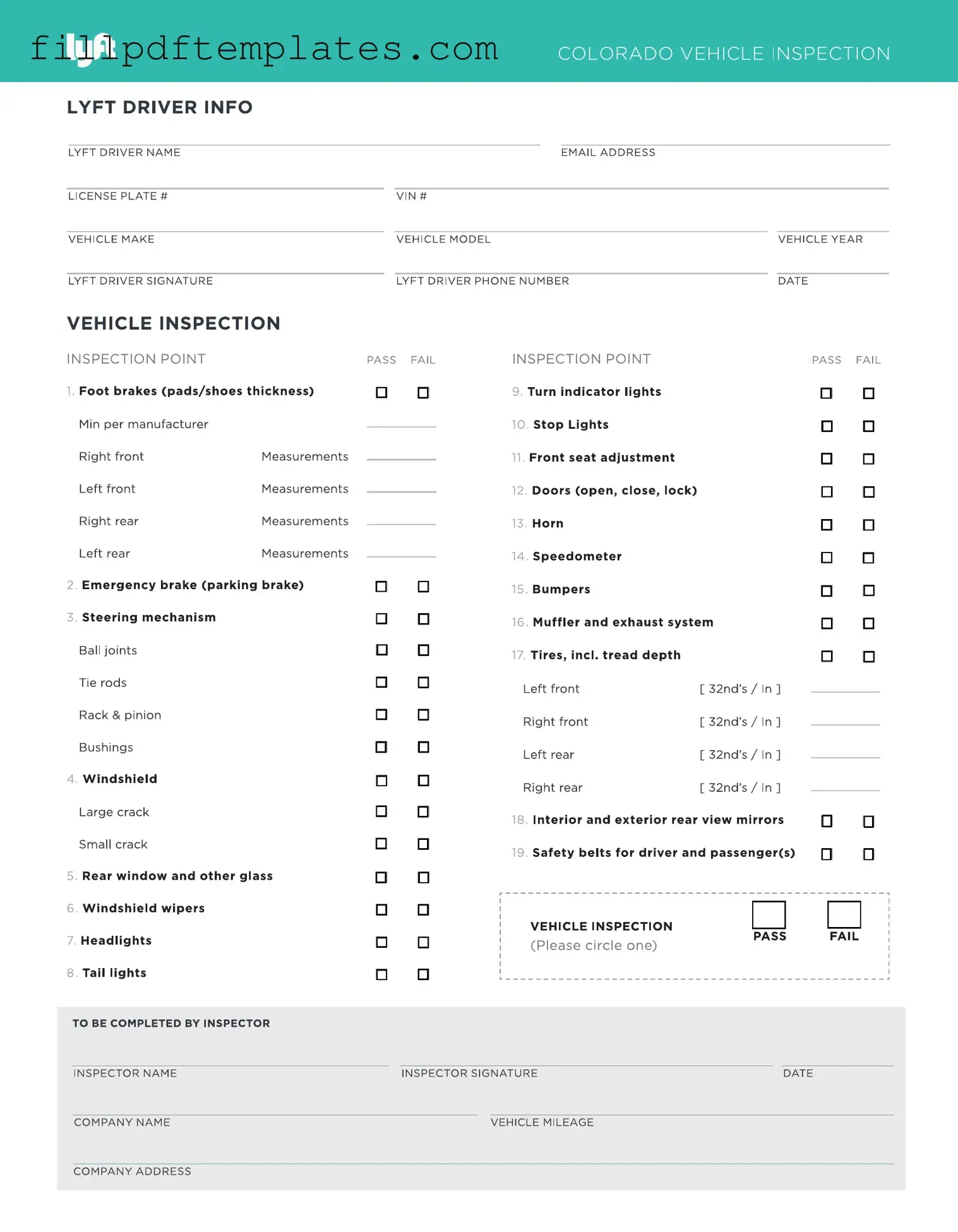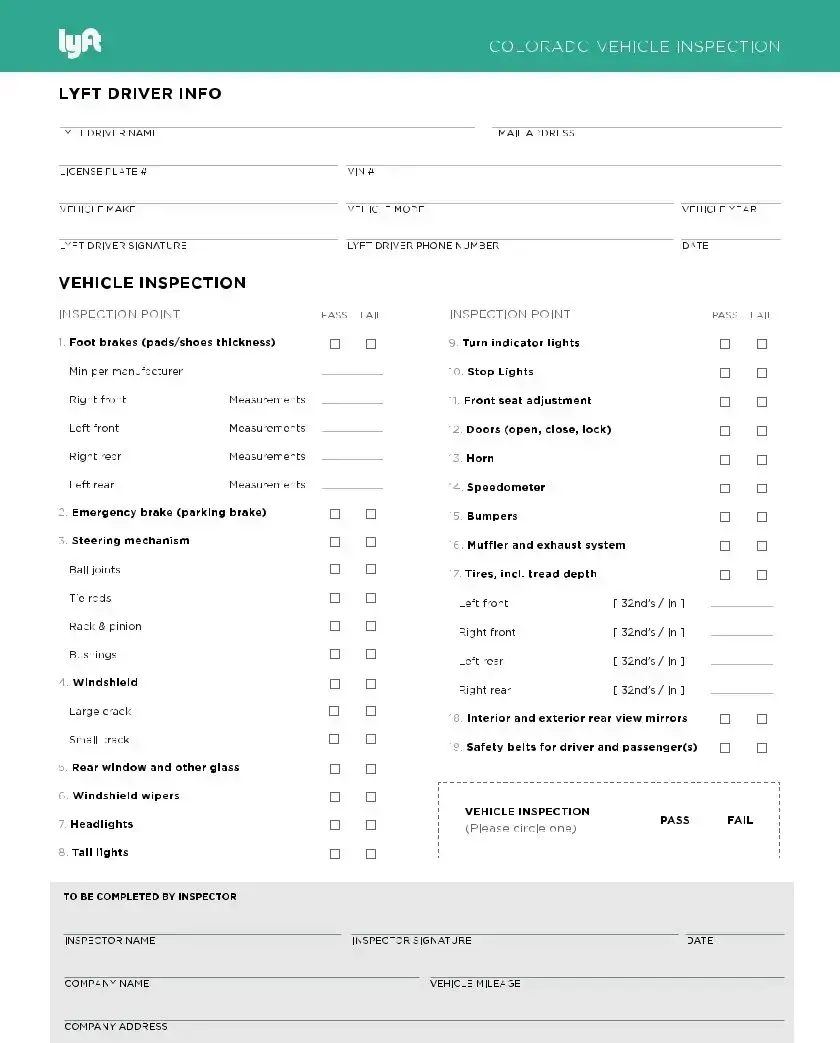The Lyft Inspection form plays a crucial role in ensuring that vehicles meet safety and operational standards before they can be used on the platform. This comprehensive document is designed to evaluate various aspects of a vehicle, including its exterior condition, interior cleanliness, and mechanical integrity. Key components of the form include checks for tire condition, brake functionality, and the presence of essential safety features like seatbelts and airbags. Additionally, the inspection process requires a review of the vehicle's registration and insurance status, ensuring compliance with local regulations. Completing the Lyft Inspection form is not just a formality; it is an essential step that protects both drivers and passengers by promoting a safe ride experience. Understanding the details of this form can help drivers prepare their vehicles for inspection and maintain the highest standards of safety while on the road.

